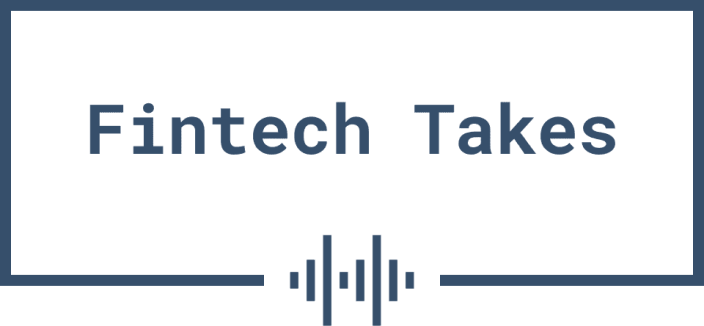What happened in fintech in Q2 of 2024?
I wanted to try to answer this question by combing through the last three months of content that I have produced (newsletters, podcasts, events, etc.) and identifying some of the most frequently recurring topics and ideas.
Obviously, this isn’t an unbiased look back at fintech Q2. Rather, it’s a summary of what was most interesting to me over the last three months.
Ready? Here we go …
This Open Banking Thing Might Be Here to Stay
Open banking was the topic that got, by far, the most attention in Fintech Takes in Q2.
This likely speaks to just how obsessed I am with it, but also – A LOT HAS HAPPENED!
The CFPB has been working to finalize its open banking rule (based on authority granted to it by Section 1033 of the Dodd-Frank Act). That work has mostly been happening behind the scenes, but it has occasionally spilled into the public discourse, especially as it relates to standard setting (wrote about it here). I also spent some time last quarter thinking more broadly about the CFPB’s vision for the future of the data economy, as it relates to open banking, AI, and the Fair Credit Reporting Act (read more about that very nerdy confluence of topics here).
And speaking of the future of the data economy, companies in the open banking space have announced a lot of new stuff over the last three months. Plaid, in particular, showed up a lot in the newsletter, with announcements on KYC and customer onboarding (read more), fraud prevention (read more), and cash flow underwriting (read more).
Ohh, and speaking of cash flow underwriting – Q2 was a HUGE quarter if you are (like me) a cash flow underwriting nerd!
I wrote two of my absolute favorite sponsored deep dive essays that I’ve ever done on cashflow underwriting and the rise of consumer-permissioned alternative data:
- Learning How To Play A New Game
- Everything You Ever Wanted To Know About Cash Flow Underwriting But Were Afraid To Ask
I also got a chance to dig into the future of pay-by-bank (which is seeing a massive surge in interest thanks to the advances in open banking) in a sponsored deep dive – Innovation On The Edge – and in a conversation with my friend Jason Mikula on our podcast Fintech Recap (listen here).
And finally, I had the opportunity to indulge my own curiosity regarding a specific class of companies that I’ve been fascinated with for a while (I call them super aggregators … read more about them here).
Overall, the takeaway from Q2 is that this open banking thing might be here to stay (unless you live in Canada).
BaaS Island
[Hums the tune from the Gilligan’s Island theme song]
In Q2, it really did feel like the fintech industry ended up stranded on a deserted island, when all we wanted was a three-hour tour. 🎵 A three-hour tour 🎵
Every episode of Fintech Recap with our BaaS Island embedded reporter Jason Mikula revolved around BaaS (April, May, June).

I also wrote quite a bit about BaaS during those months, although my takes tended to focus more on the big picture. I asked questions like, Who is BaaS for? Should we ban FBO accounts in BaaS? And, How do we ensure fintech companies’ operational resilience?
I also have, more recently, been heaping scorn on Evolve Bancorp because, and I can’t emphasize this enough, they deserve it (here and here).
It would be nice, for Mr. Mikula’s sake at the very least, if BaaS chilled out in Q3, but I think there’s very little chance of that happening.
[Sadly resumes humming the tune from the Gilligan’s Island theme song]
Private Credit + Nonbank Lending: How Far Can This Go?
As more onerous capital requirements have pushed banks to pull back on certain categories of consumer and commercial lending, nonbank lenders and private credit funds have stepped in to fill the gap.
This model is not unfamiliar (much of the consumer and commercial lending done in the 20th century was done through a similar model), but it does give me some anxiety. Is a specialized and highly modular lending ecosystem (which is what we have now) better than a vertically integrated ecosystem (which is how bank-led lending has historically worked)?
I suppose we will find out!
In Q2, I wrote about a company called Pagaya, which sits at the center of the modern lending ecosystem (read it here). I also learned a bit more about what Figure Technology Solutions (the company that Mike Cagney founded after SoFi) does, and how it ties into these larger trends (read about that here). And Steven Kelly, Associate Director of Research at the Yale Program on Financial Stability, talked a bit about the growth of private credit and how banks are adapting to it (and tougher capital requirements) at the end of the Bank Nerd Corner podcast that Kiah Haslett and I did with him in April (listen here).
BNPL and the Rise of Merchants
My favorite big-picture idea from all the content I published in Q2 is this – merchants are now the most important and influential stakeholders in the financial services ecosystem.
In my essay – I Believe the Merchants Are Our Future – I walk through the recent history of coopetition between merchants and banks and explain why, over the last five years, that dynamic has tilted away from cooperation and towards competition:
Over the last 3-5 years, commerce has become more deterministic for small merchants and startups. You no longer choose to accept a particular form of payment out of fear that a customer walking in the door will be mad if you don’t. Instead, you design every step of your commerce journey (including payments and lending) to deliver the exact outcome you want.
BNPL is an obvious example of an innovation enabling smaller merchants to make commerce more deterministic, and it has been a hot topic in Fintech Takes over the last three months. I’ve covered news from Klarna (read more) and Affirm and Apple (read more), and I recently hosted a virtual summit on BNPL, in which we covered a lot of ground with some great speakers (here are my notes from the event).
Nubank is Playing a Different Game
I’m usually very impressed with everything Nubank does, and the last few months have provided a few examples of why I think so highly of the company.
First, the company is creating a mobile virtual network operator (MVNO) in order to offer mobile services to its customers, which is a smart strategy for growing in its home market (MVNOs only represent 1% of the total mobile lines in Brazil) and for its international expansion plans (Nubank’s mobile partner Claro also operates in Colombia and Mexico) (read more).
Second, Nubank recently scooped up an AI startup called Hyperplane, which is focused on harnessing foundation models to extract insights from banks’ first-party datasets. I had one of the co-founders of Hyperplane on the Fintech Takes podcast a while back (listen here), so I had lots of thoughts on this one (read more).
Pre-IPO Chime is Getting Interesting
Chime was another company that came up a lot in Q2.
This was unusual for me, historically speaking, because Chime has always been a relatively quiet and slow-moving (in a good way!) company. That has started to change as the company prepares for an IPO.
Jason Mikula and I talked a bit about Chime in April’s Fintech Recap episode (listen here), and I wrote more about them after Forbes published a great deep dive on the company, which confirmed why I’ve always felt a bit more positive about them than your average neobank (read more).
I also covered their recent run-in with the CFPB (read more) and their acquisition of Salt Labs, which represents the culmination of their long-held fascination with earned wage access (read more).
Alex’s Most Controversial Takes
I want to end by sharing the Q2 takes that generated the most disagreement from folks in the ecosystem and how I have (or haven’t) changed my mind about them since I first shared them.
The take: It’s inherently unsafe to keep individual customers’ money in omnibus accounts managed by unregulated third parties, and regulators should ban this practice for banks participating in BaaS.
Have I changed my mind?: After talking about this constantly for the last couple of months, I definitely have more sympathy for why community banks in BaaS feel like they have no choice but to use FBO accounts (the main reason is the cost and inflexibility of legacy core systems). However, my basic opinion on this remains unchanged. Banks should either invest in sidecores that they manage in-house and that are acceptable to their fintech partners, or fintech companies (and middleware platforms) need to be directly regulated. The status quo is unacceptably dangerous.
2.) Tipping in Fintech is Complete Bullshit
The take: Fintech apps asking users for tips is embarrassing. It’s also (depending on how it is implemented) either mildly predatory or bad business. Either way, no company should do it.
Have I changed my mind?: Nope! I got a lot of pushback on this, but none of it convinced me that tipping as a business model (or even as one component of a business model) is a good idea. Just be a normal company and charge a fee for your services!
3.) Evolve’s Incompetence Was a Feature, Not a Bug
The take: Evolve didn’t run a tight ship, which made it an attractive partner for fintech companies looking for a bank partner that would let them do whatever they wanted. However, this also meant that the bank was unlikely to invest as much as it should have in things like information security.
Have I changed my mind?: I published this one just a few days ago and it has already engendered more disagreement than I would have thought. However, my opinion remains unchanged! The Federal Reserve’s enforcement action specifically called out the bank’s poor infosec practices! It’s obvious to me that Evolve wanted to make a lot of money from BaaS while investing the bare minimum in the necessary risk management controls. That was attractive to its fintech partners … until it wasn’t.


